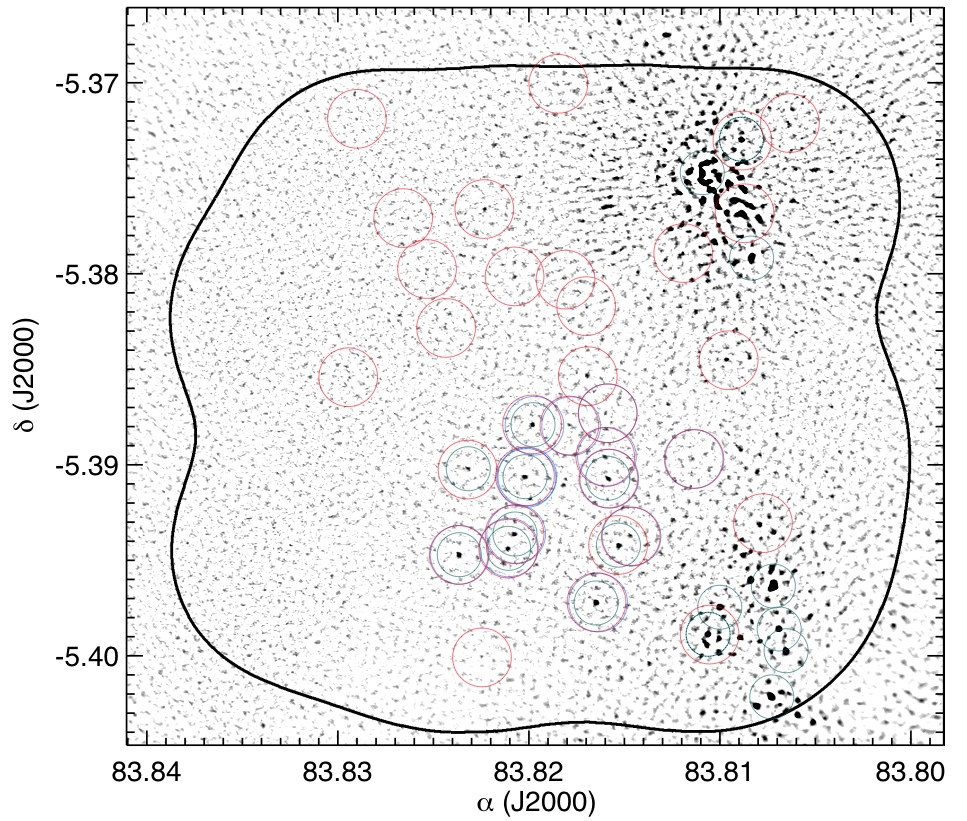The masses of circumstellar disks provide direct constraints on
massive planet formation, since planets require a certain amount of
building blocks. For example, Jupiter required >0.01 solar masses of
matter to form in our solar system. Rich clusters provide an
opportunity to study the frequency and evolution
of circumstellar disks around large numbers of stars spanning
two or more decades in stellar mass. Moreover, most stars (including
our sun) form in clustered regions, and so understanding
protoplanetary disks in rich clusters provides basic information about
the typical mode of planet formation.
I have used OVRO, the
SMA, and CARMA
interferometers to study the disk mass distribution in rich clusters.
Recent observations of the Orion Nebula
cluster (Eisner et al. 2008) showed that less than ten percent of
systems appear capable of
forming massive, Jovian planets (see also this press
release).
However, a number of significant uncertainties remain.

A mosaic of the Orion nebula cluster obtained with CARMA and the SMA. Circles indicate detected sources. Only a smal fraction of known cluster members show emission at milimeter wavelengths indicative of massive protoplanetary disks.
More recent work includes the study of disk masses in less evolved sources (Eisner 2012, Sheehan & Eisner 2014), and much deeper mosaicked images of clusters with ALMA (at the moment using Cycle 2 and scheduled Cycle 3 observations).